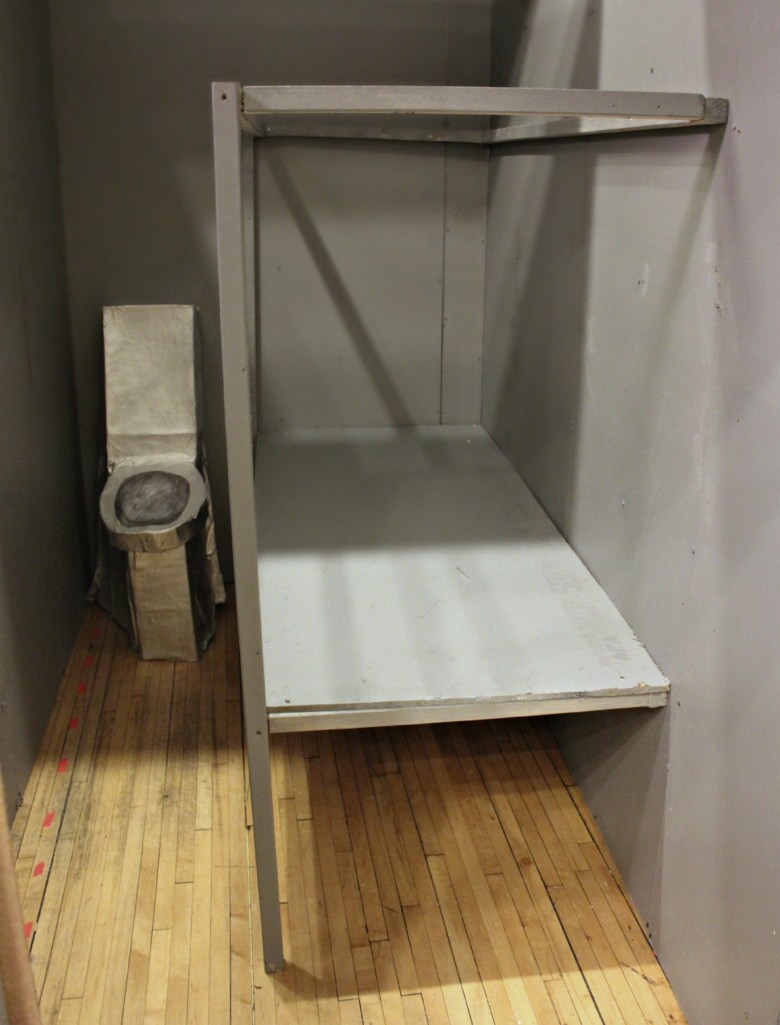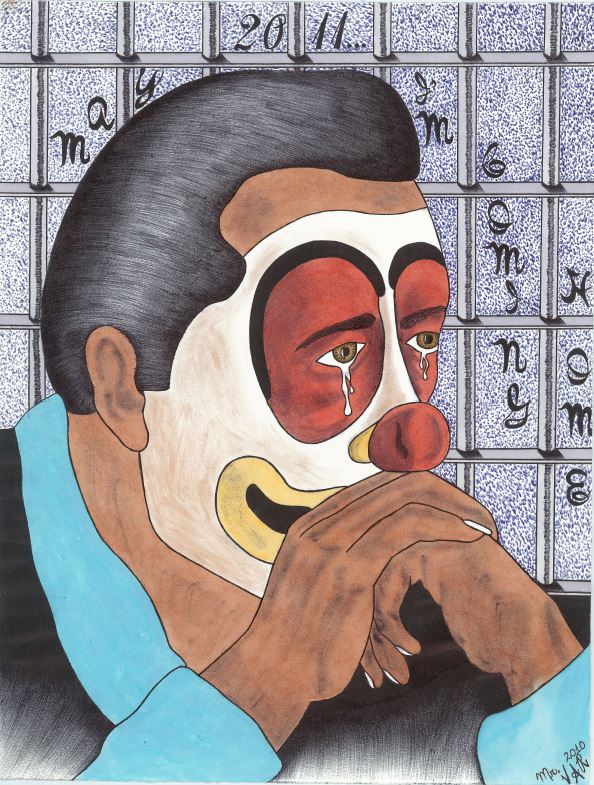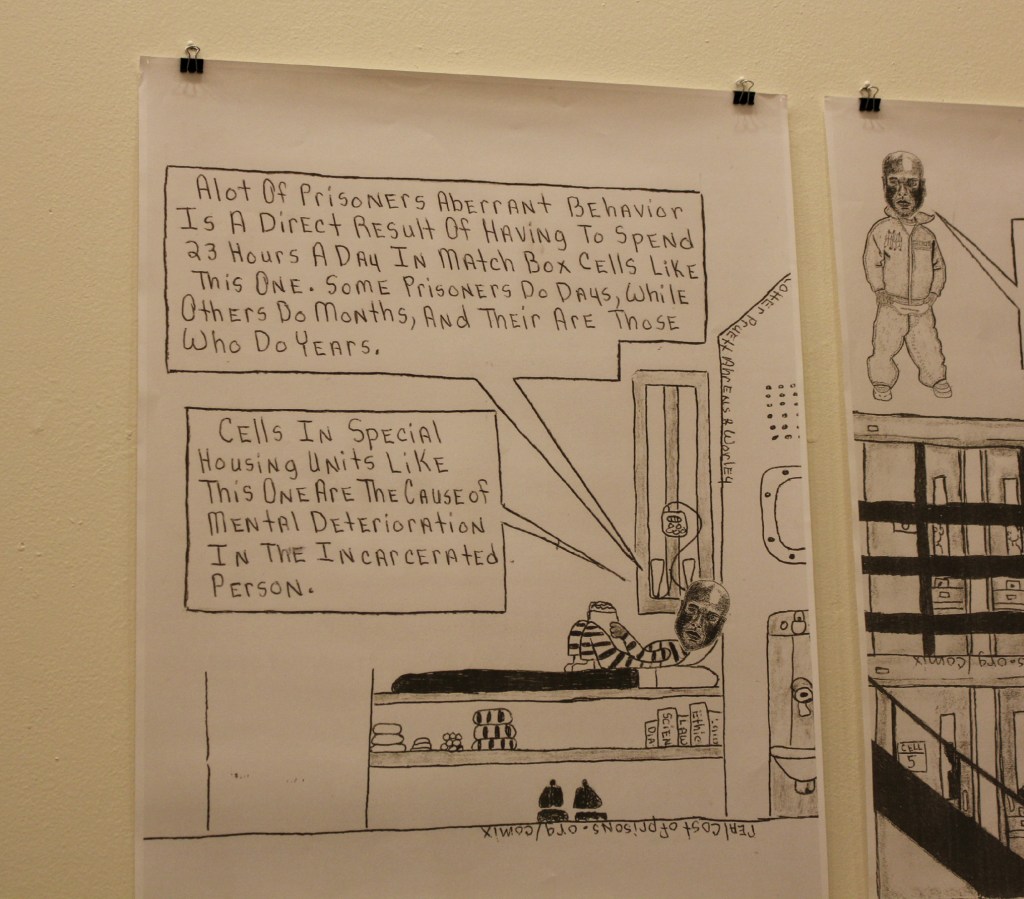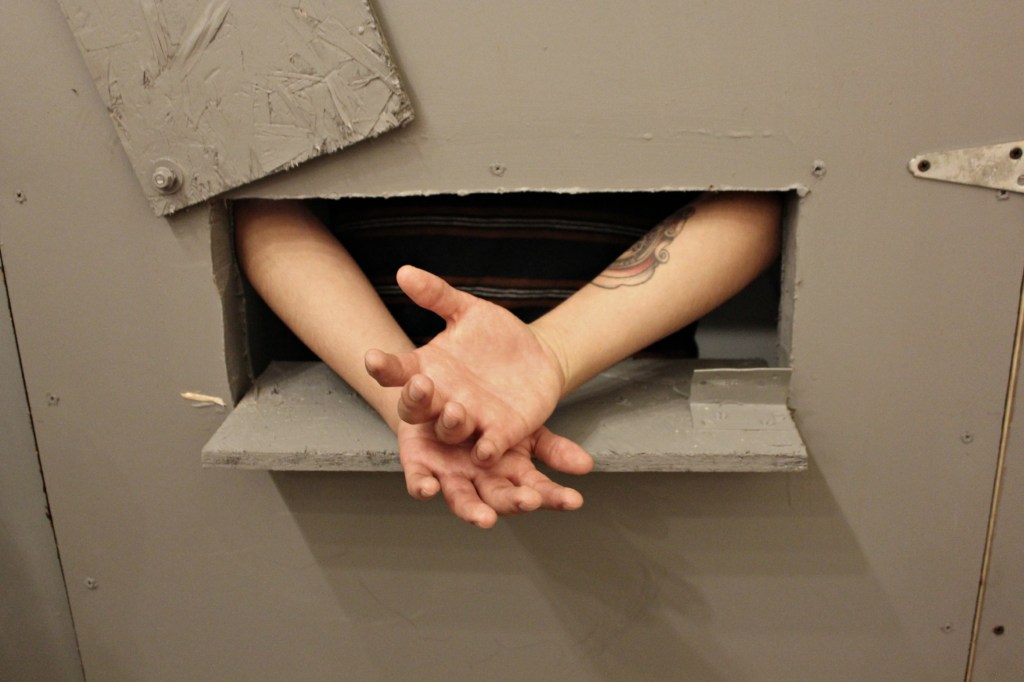I’m honored to share this guest post from my friend and fellow organizer Megan Groves, who is the Director of Development and Communications at the Uptown People’s Law Center. The Chicago Light Brigade recently collaborated with UPLC on an event that brought artistic representations of the world of solitary confinement to an exhibit in Chicago. Here, Megan shares her thoughts on that exhibit, and why the current fight against solitary confinement is so important.
“I had to drink this beer to get the taste of the cell out of my mouth,” Brian said, raising his bottle to the audience. A survivor of 12 straight years of solitary confinement at Tamms Supermax, he can still sometimes taste the concrete dust, and being in a room with a life-size model of a solitary cell wasn’t helping.

Brian went on to say that though his nametag said he was a “survivor” of solitary, he doesn’t feel like he has survived. More than four years after leaving his cell, he said, “not a day goes by that it’s not in my head.” The crowded room was quiet, and Brian’s eyes were wet as he talked. He has serious PTSD from what he went through, plus a lot of survivor guilt because of the guys he left behind, still locked in gray boxes of their own.
When I was organizing the Sentenced art exhibit, I knew it could be powerful, but I didn’t know just how powerful. Even the designer of the model cell, Jim Ginderske, didn’t realize how intense it would be to stand inside of the cell, until its completion. In the cell, everything is gray. You can spread your arms and easily touch both of the side walls, because the distance is only four and a half feet. Long ways, the cell is just nine. This is based on the reported size of the solitary cells in Menard Correctional Center in Illinois, 348 miles from Chicago.
Drawings and letters from men in solitary cover the walls of this exhibit, collected by Lisbet Portman of Architects/ Designers/ Planners for Social Responsibility. These 17 people represent a small fraction of the 80,000 people currently held in solitary confinement in US prisons. There is also art from current and former prisoners in solitary that Uptown People’s Law Center has accumulated over the decades. This includes work by Tony, another Tamms survivor who spoke at the event. Though he lacks any formal training, his art shows tremendous skill. Some of Tony’s art is drawn on prison-issued handkerchiefs. The colors used in his work are from Skittles and M&Ms, because he was not allowed colored pens, pencils, or paints.

The piece with the most meaning to Tony is the last one he did while inside. It shows a man in a cell, wearing a clown mask, crying. The text simply reads: MAY 2011…I’M COMING HOME. Tony explained the symbolism of this work to a rapt crowd at the opening. He told us the crying represented his fears of returning to the outside world after so many years in solitary. The mask represents his feeling that his people don’t know the real him anymore: locked up at just 17 years old, after decades in prison, he is now a different person.
The skill shown in many of the works in Sentenced is astounding. This art is a testament to the resourcefulness of prisoners and their desire to express themselves, to feel human, even when treated like an animal. Worse than an animal, really—even zookeepers know better than to keep social animals alone.

Solitary confinement has been recognized as torture by the United Nations’ torture expert Juan Mendez. He has recommended that its use for more than 15 days be absolutely banned. Yet right here in the US, prisoners routinely spend months, years, and even decades in solitary.
I could tell you more about the long-term effects of solitary: the way it permanently changes one’s brain to not have any meaningful human contact. How the poor air circulation in the cells causes the prisoners to breathe in their own exhaled carbon dioxide, leading to brain damage from lack of oxygen. But we put together this exhibit so that the prisoners could speak for themselves. One piece of art reads:
“I received one book a week, which I would finish in one or two days, leaving the other six days of listening to the radio and to write. We received…a pen per week, which I would use up all of the ink prior to them reissuing a new pen. We lacked mental stimulation, which had me contemplating standing on the sink and jumping into a head dive into the concrete floor just to stop my brain…”
Part of the work of Uptown People’s Law Center is to try to give prisoners a voice on the outside. UPLC gets over a hundred letters a week from prisoners in Illinois, and we answer every one. We also visit prisoners, to hear exactly what they are going through inside—legal visits are afforded privacy from guards’ ears that regular visits aren’t, so prisoners can really tell us the truth. Because most prisons are very far from Chicago, we need money for gas, food, and sometimes lodging. If you’d like to support this, please click here.
Illinois releases about 35,000 people from the “correctional” system each year. Wouldn’t it be better for their communities to ensure they return untraumatized from prison? And people who commit crimes are still human beings—no matter what someone is guilty of, they don’t deserve the torture of solitary confinement. The US is supposed to be a civilized country. Illinois already banned the death penalty, and should serve as a role model for other states who still engage in that barbarism. It’s now time for Illinois, and all states, to stop the use of solitary confinement.

Sentenced aims to bring voices of imprisoned people into the wider dialogue of the struggle to end cruel, inhuman, and degrading punishment in the US. It was co-curated by Uptown People’s Law Center (UPLC) and Architects/ Designers/ Planners for Social Responsibility (ADPSR). In 2012, ADPSR petitioned the American Institute of Architects (AIA) to change its Code of Ethics to respect human rights by banning the design of execution chambers and spaces intended for prolonged solitary confinement. The AIA rejected this petition in late 2014. Follow UPLC on Facebook or Twitter to find out the date of the next public exhibit of Sentenced in Chicago at Art In These Times.
Megan Groves is a Chicago activist and Director of Development & Communications at Uptown People’s Law Center (UPLC), a nonprofit that fights for the rights of tenants, disabled people, and prisoners. Uptown People’s Law Center has nine pending class action lawsuits regarding Illinois jail and prison conditions.